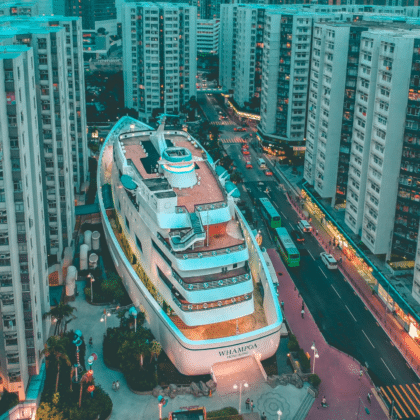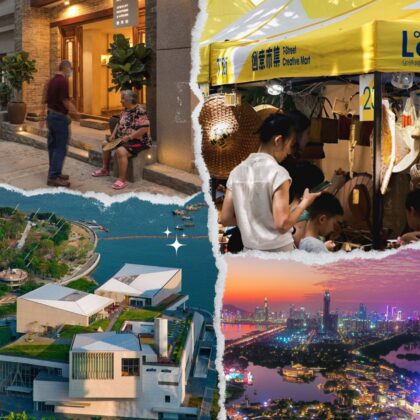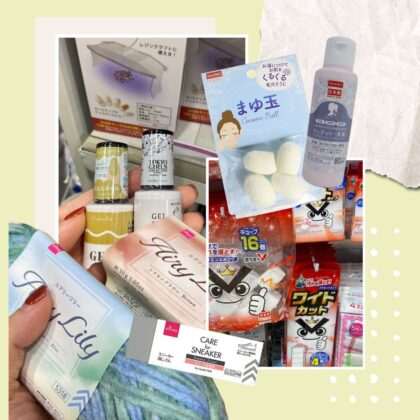As a one-stop-shop for lingerie, loungewear and more, SHEER is where to go if you find underwear shopping in Hong Kong to be a tricky task.
As much as we love shopping, the one thing that we don’t always find enjoyable is shopping for underwear. The range of styles, fit, brands and fabric choices can be quite daunting for anyone – especially when it comes to finding the correct size. Intended to make us feel comfortable and confident, shopping for bras can often leave us feeling, well, a little flat. Luckily, lingerie boutique, SHEER, is here to help us with our lingerie woes! As one of Hong Kong’s premier lingerie and swimwear boutiques, the store carries over 40 specially curated designer labels. But that’s not all that SHEER offers. Along with a wide range of t-shirt bras and lingerie, loungewear, shapewear, bridal pieces, accessories and swimwear, the boutique also offers private bra-fitting experiences.

In the personalised appointments, the SHEER lingerie experts are on-hand to help every step of the way. From finding your correct size and matching you with your preferred style, to showing you how the right size should look and feel (and what to look out for in an ill-fitting bra!). The knowledgeable staff at SHEER will even give you tips on how to properly care for your bras. Once you know your correct size, you’ll be able to shop a range of products from big brands such as Chantelle, Eberjey, Stella McCartney Lingerie, La Perla and more – all in sizes 28 to 38 band and A to F cup! What’s more, the bras are quite affordable, with prices on average ranging from $450 to $800 for one.
We were long overdue for some new bras, so decided to give SHEER’s personalised bra-fitting service a try. Keep reading to find out how we got on!
What did you hope to achieve from the fitting?
I have been wearing the same bra size for years, but since my weight has fluctuated recently, I knew it was time I was properly fitted again. I was experiencing gaping in the cups, and my bras generally weren’t fitting quite right. This impacted the way my clothes looked on me, and so I wanted an expert to help me identify my new correct size.
What were your expectations of shopping at SHEER?
It was my first time visiting SHEER, and I was extremely impressed by the large product selection, attentiveness of the staff and aesthetic of the store. Conveniently located in Central’s Landmark building, the polished, minimalistic décor made me feel completely at ease and allowed me to browse the products easily. I was also pleased to see that the store stocked many well-known brands from all over the world.

How was your private bra-fitting experience?
SHEER’s service was impeccable! We started with assessing the bra and size I was currently wearing, and what problems I was having. A top tip I learned during the assessment was that if the band of the bra didn’t sit completely horizontally across your back and is riding up, the band is too loose. This is one of the most common fit issues women face and once we found that it was happening to me, we proceeded to find my “sister size”. I learned that cup sizes change proportionally to its band size, so the cup size in a 34B is actually larger than the cup size in a 32B. To find my “sister size,” SHEER helped me discover that the “sister size” of my 34B is a 32C, and not a 32B as I would’ve originally thought. I learned that certain bra styles work better for different breast shapes depending on where the weight of the breast rests. In the end, I tried on at least 20 different bras and not once did I feel any pressure to buy anything. The lingerie experts at SHEER were so patient and supportive, and that made the whole bra-fitting experience so enjoyable. I ended up finding many things I liked, and my new bras are an absolute game changer!

How was your overall experience, and would you recommend SHEER’s private bra-fitting appointment to friends?
Absolutely incredible! Aside from learning so much, I found bras that fit me well and suddenly my clothes look a lot more flattering! I was also surprised at how affordable the options were; finding the perfect strapless bra for less than $500. I’m sure my friends will enjoy their experience at SHEER as well. There’s truly something for everyone as SHEER stocks bras from band sizes 28 to 38 and all the way to an F cup. I will also be going back annually to get (re)measured.
Want to book a complimentary SHEER bra-fitting experience for yourself? Head here to make an appointment!
Sassy Perk: Use the code SASSYSHEER15 for a special treat when shopping at SHEER. Valid until Tuesday, 31 December, 2019. (Terms and Conditions apply).
SHEER, Shop 310, 3/F, Landmark Atrium, 15 Queen’s Road Central, Hong Kong, 2388 2876, [email protected], www.sheer.com.hk
Brought to you in partnership with SHEER. Images property of Sassy Media Group.





 Eat & Drink
Eat & Drink



 Travel
Travel



 Style
Style



 Beauty
Beauty



 Health & Wellness
Health & Wellness



 Home & Decor
Home & Decor



 Lifestyle
Lifestyle


 Weddings
Weddings






